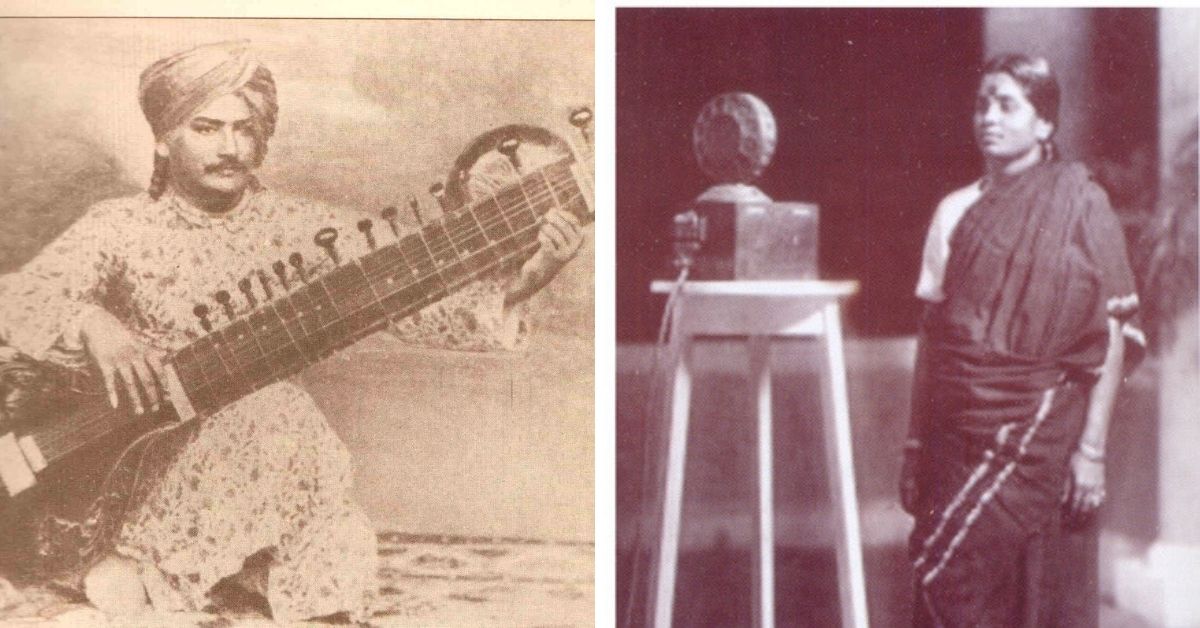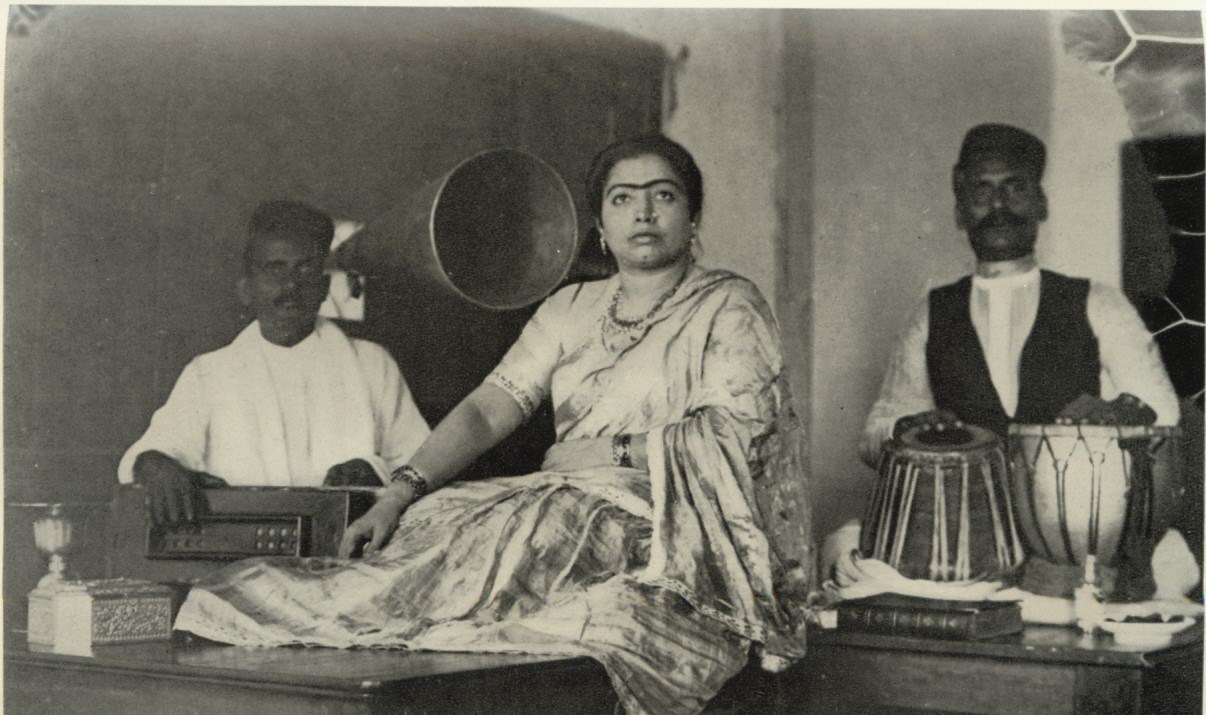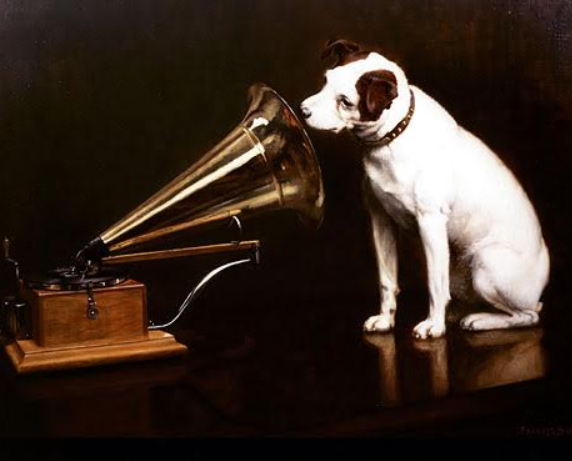Ekla Chalo Re: This ‘One-Man Army’ is Saving India’s Pre-Radio Gramophone Recordings!
15,000 gramophone records are a part of Archive of Indian Music (AIM) that aims to digitise and preserve some of the rare recordings from the pre-radio era.

At the crack of dawn, Vikram Sampath made his way through the crowd behind the Red Fort. He walked past the colourful roadside stalls selling everything from clothes, shoes, to the best of wrist watches, and stopped right in front of a small shop parked at the corner of the chaotic street.
The kabaadi (scrap) shop hardly had room for one person to sit. Looking at the owner seated on piles of newspapers, cassettes and old gramophone plates, Vikram, an admirer of classical music, felt sad.
As he rummaged through the clutter, he stumbled upon a gramophone record of Mahatma Gandhi. Titled Spiritual Message of Gandhi, the recording was done in London during a round table conference in 1931.
Reminiscing about the day he found the priceless recording in 2013, Vikram tells The Better India,
My heart nearly broke when I saw that plate amidst the clutter. Seeing our cultural inheritance treated badly, I wondered how much of our history and heritage must be covered in dust only because there is a dearth of preservation resources.
Coming across that shellac record lying unattended wasn’t a first for Vikram. In fact, it is in Chor Bazaars and second-hand and scrap dealing shops across the country that he found most of the precious vinyl and shellacs.

Today, more than 15,000 gramophone records are a part of the Archive of Indian Music (AIM), an organisation started by Vikram to digitise and preserve some of the rare recordings from the pre-radio era.
His collection include artists from music, cinema, theatre, Carnatic classical, and folk, even political rallies during the freedom struggle. From Janki Bai of Allahabad, Gauhar Jaan, Bangalore Nagarathnamma, Mehboob Jaan of Solapur, M S Subbulakshmi, Bhimsen Joshi, and Zohra Bai, several vocalists and musicians can be found at the AIM.
Vikram credits his love for music and initiative to preserve the divine voices recorded in a gramophone to his childhood, parents and maternal grandmother.

Music entered my life when I was merely four-years-old. I had a keen ear for anything musical like songs and jingles. My grandmother recognised it and put me into Carnatic vocal music classes when I turned five.
Besides music, Vikram grew up on history books. His interest for history would often take him to the Mysore Palace where he would learn about the Wodeyar dynasty, “I was spurred by interest to know the stories of Mysore’s royal family.”
He studied about one of the longest ruling dynasties for nearly ten years along with juggling his academics in Bengaluru. He joined BITS Pilani and SP Jain (Mumbai) and then went to work at many leading multinational firms before dedicating himself to this project.
However, his near and dear ones encouraged him to utilise the knowledge and write a book on the dynasty. In 2007, his first book, Splendours of Royal Mysore: The Untold Story of the Wodeyars was published.
It was during the research for the book that Vikram learnt about Gauhar Jaan. She was the first Indian voice to be recorded on a gramophone in 1902. Tawaaif Gauhar Jaan had lent her voice to over 600 records and travelled across the world.

For his second book on Gauhar Jahan, Vikram went to Berlin on a visiting Fellowship at the Institute for Advanced Study.
“Since she was a tawaaif, there was hardly any material about her in India. In Berlin I chanced upon her recording.. Her recording made me curious about the gramophone plates. I visited multiple Sound Archives in Europe,” says the 39-year-old.
He adds, “Two things stood out for me during my research—all the European countries I visited, had National Sound Archives and secondly, the number of valuable recordings of Indian artists. As a student of music, I would be embarrassed every time someone would ask about India’s music archives since we did not have any.”
During his six-month fellowship, Vikram learnt the technique of digitising the records and upon his return to India in 2010, he formed an elaborate plan to establish a music archive.
He met several government officials for his proposal but all in vain. Finally it was T V Mohandas Pai (then with Infosys, and now, chairman, Manipal Global Education) who agreed to give Vikram seed funding to set up the archive. His parents came on board as trustees.
With time, stalwarts in the Hindustani and Carnatic classical field like Bombay Jayasri, Shyam Benegal, Sonal Mansingh, Shyamala Bhave, Alarmel Valli, Chinmaya Gharekhan and Nandini Ramani gave their valuable inputs and helped Vikram expand.

He procured the necessary machines and started digitising the songs from the original analogue form of a 78 RPM or a Vinyl disc (EP or LP). The archives are kept in Manipal and the International Institute of Information Technology, Bengaluru.
So far, Vikram has digitised 6,000 plus tracks that are uploaded on SoundCloud so that people can access them from anywhere for free.
Since 2011, he has also curated several exhibitions across India where people listen to the songs.
The response from people has been overwhelming, says Vikram, “There are five lakh followers on SoundCloud, which shows that people are interested in knowing about our music history. We had not expected this when we started.”
Also Read: ‘Palace of Fairies’ to ‘Lost Hill of Faces’: 12 Hidden Heritage Gems in India You Need to See!
As for the future, Vikram hopes to expand his initiative and involve researchers and academicians who can study the material collected by him over the years, making it interesting and accessible, especially to young people.
If you wish to contribute to Vikram’s collection or donate, you can write to him at [email protected].
(Edited by Shruti Singhal)
Images courtesy: Vikram Sampath
Like this story? Or have something to share?
Write to us: [email protected]
Connect with us on Facebook and Twitter.
If you found our stories insightful, informative, or even just enjoyable, we invite you to consider making a voluntary payment to support the work we do at The Better India. Your contribution helps us continue producing quality content that educates, inspires, and drives positive change.
Choose one of the payment options below for your contribution-
By paying for the stories you value, you directly contribute to sustaining our efforts focused on making a difference in the world. Together, let’s ensure that impactful stories continue to be told and shared, enriching lives and communities alike.
Thank you for your support. Here are some frequently asked questions you might find helpful to know why you are contributing?


This story made me
-
97
-
121
-
89
-
167













